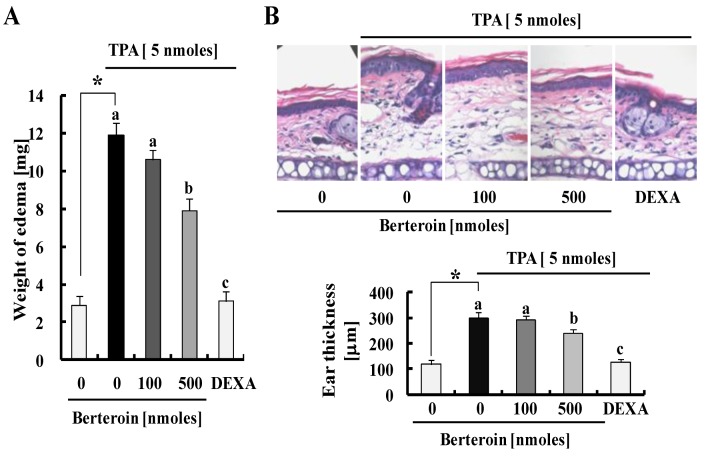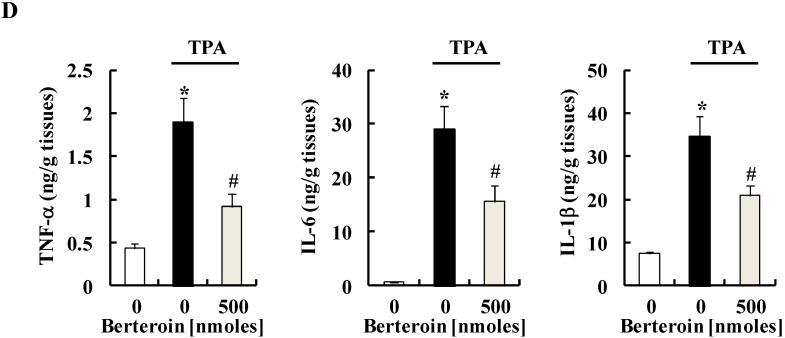Figure 6.
Berteroin inhibits 12-O-tetradecanoylphorbol-13-acetate (TPA)-induced ear edema formation in mice. ICR mouse ears were treated with berteroin (0, 100 or 500 nmole/ear) or dexamethasone (50 μg/ear) prior to topically applying TPA. The mice were sacrificed after a 4 h TPA treatment. (A) Changes in ear weights were measured in 6-mm diameter ear punch samples; (B) Each mouse ear section was stained with hematoxylin and eosin (H&E) and representative H&E images are shown in the upper panel. Ear thickness of each sample stained with H&E was quantified (lower panel). Each bar represents mean ± SEM (n = 10); (C) Expression levels of inducible nitric oxide synthase (iNOS), cyclooxygenase (COX)-2, phosphorylated extracellular regulated kinase (P-ERK)1/2, and P-AKT in the ear sections of each mouse were evaluated by immunofluorescence staining (upper panel). Scale bar, 10 μm. Relative expression levels of iNOS, COX-2, P-ERK1/2, and P-AKT were compared (lower panel). Each bar represents mean ± SEM (n = 6). * Significantly different from the vehicle-treated control group (p < 0.05). Means with different letter (a, b or c) are significantly different among the berteroin groups (p < 0.05). DEXA, dexamethasone; (D) Tissue lysates were prepared from ear punch samples and the concentrations of TNF-α, IL-6, and IL-1β in mouse skin were measured using the relevant ELISA kits. Each bar represents mean ± SEM (n = 6). * Significantly different from the vehicle-treated control group (p < 0.05). # Significantly different from the TPA group (1 mg/L TPA + 0 μmol/L berteroin) (p < 0.05).



